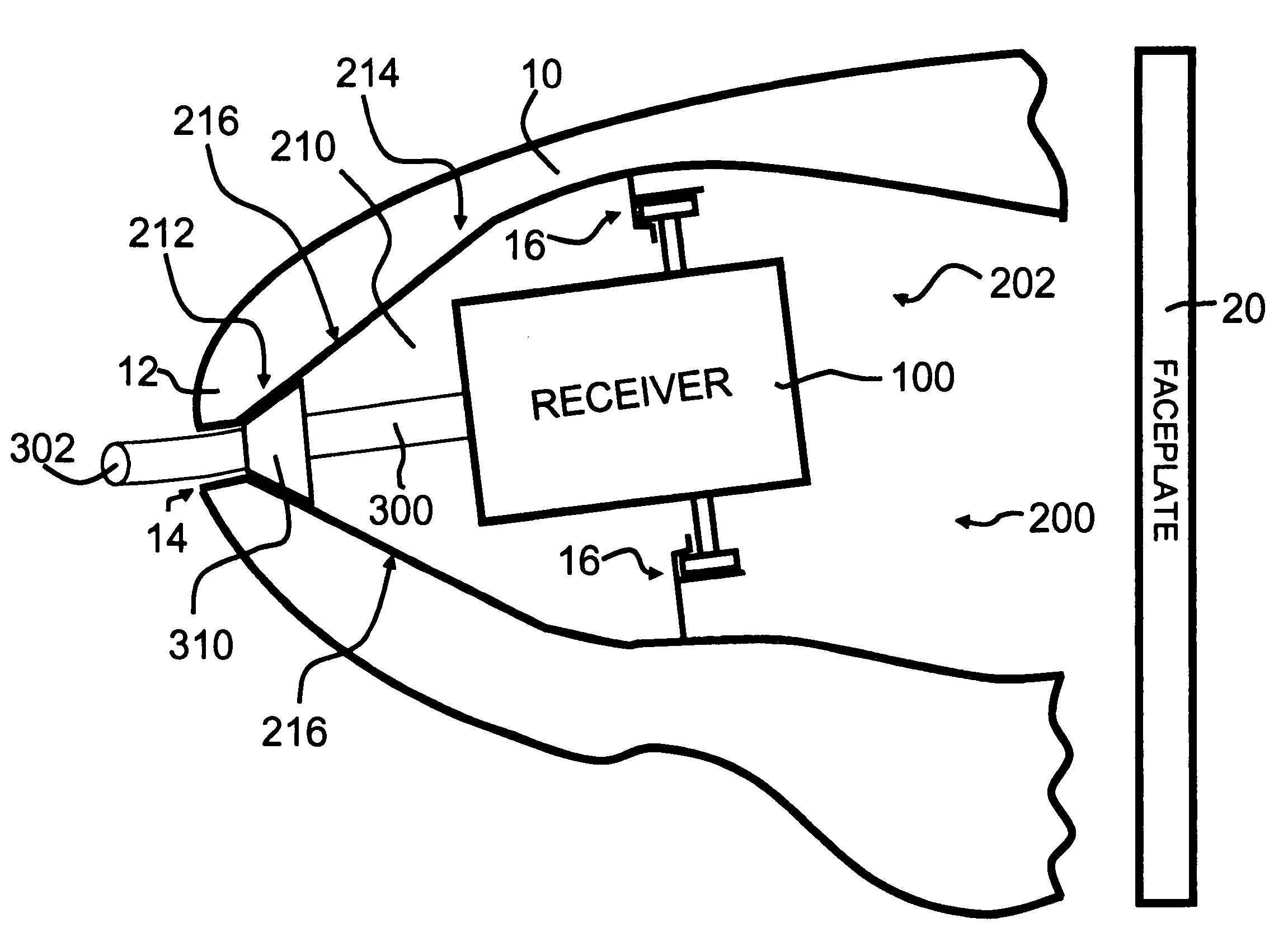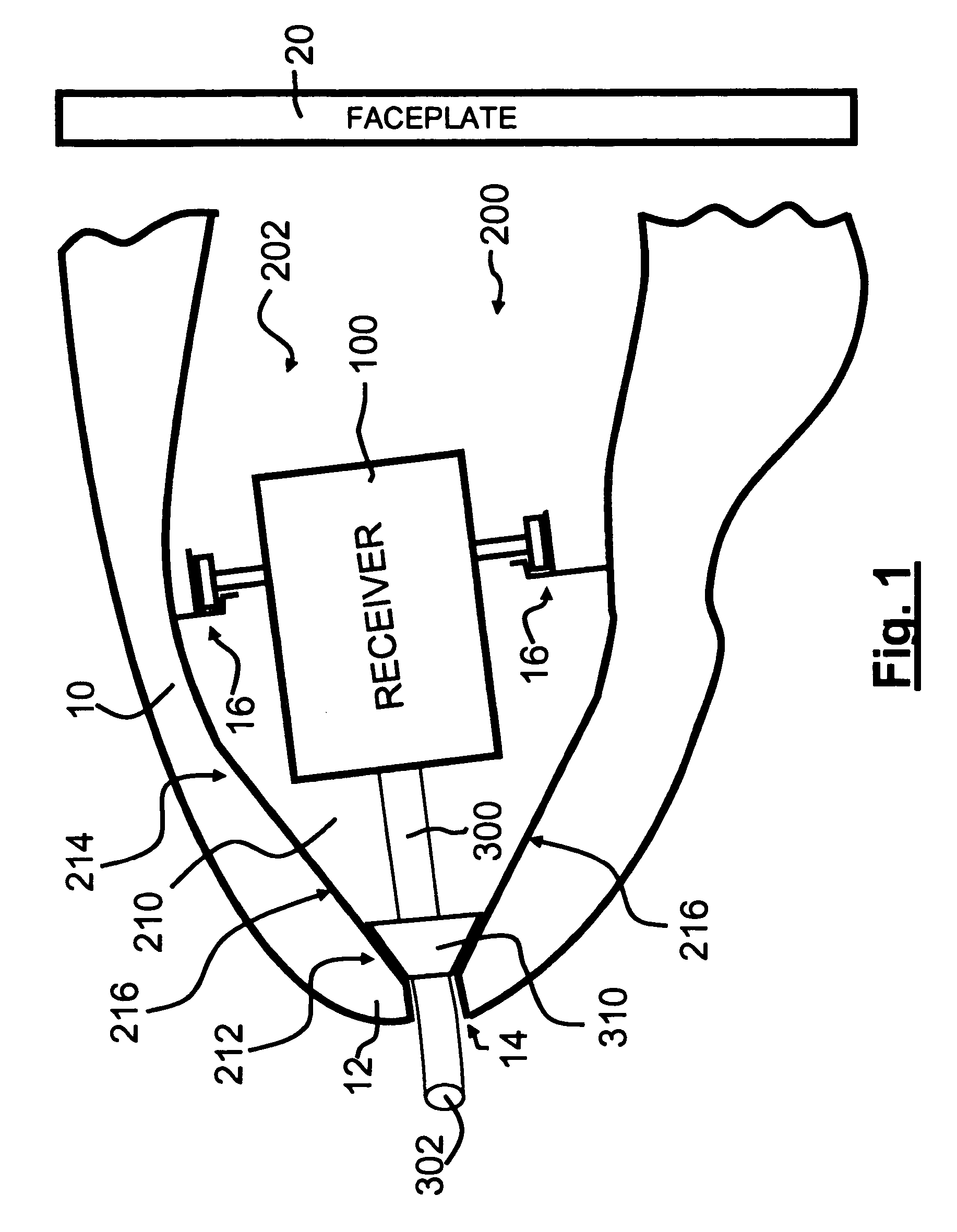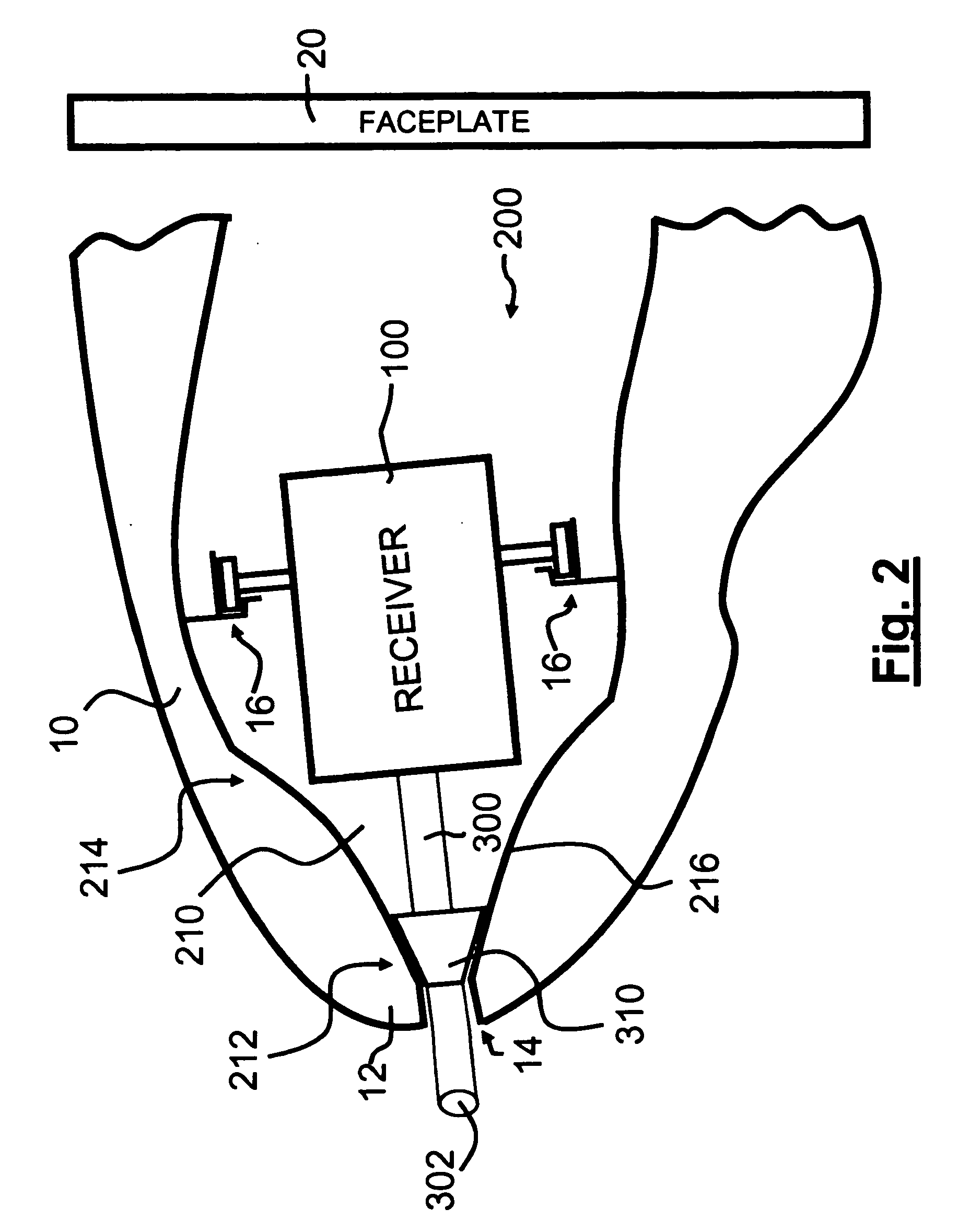Chambers for a hearing instrument shell
a hearing instrument and chamber technology, applied in the field of chambers for hearing instruments, can solve the problems of catching on the inside of the shell, the end of the tube missing the receiver tube hole, etc., and achieve the effect of reducing the tendency of the walls to vibrate and improving the assembly process
- Summary
- Abstract
- Description
- Claims
- Application Information
AI Technical Summary
Benefits of technology
Problems solved by technology
Method used
Image
Examples
Embodiment Construction
[0017]FIG. 1 is a partial cross-sectional view of a hearing instrument shell or housing 10, comprising a tip 12 to be inserted into the ear canal of the person wearing the hearing instrument. The other end of the shell 10, on the right side of FIG. 1, shown incomplete in this as well as the other figures, is where the faceplate 20 (shown schematically here) would be attached. The faceplate 20 is the portion of the hearing instrument that faces generally outwardly from the ear proper, and at least a portion of the faceplate 20 is typically visible in the outer ear. In addition to an opening to admit sound, the faceplate 20 may also contain a battery door and a volume control. The faceplate may be fabricated as an integral component of the housing or shell 10 or it may be a separate part attached to the housing or shell 10 during assembly.
[0018] A receiver assembly 100 is positioned in the interior 200 of the shell 10 and may be mounted there using anchors 16 such as those described ...
PUM
 Login to View More
Login to View More Abstract
Description
Claims
Application Information
 Login to View More
Login to View More - R&D
- Intellectual Property
- Life Sciences
- Materials
- Tech Scout
- Unparalleled Data Quality
- Higher Quality Content
- 60% Fewer Hallucinations
Browse by: Latest US Patents, China's latest patents, Technical Efficacy Thesaurus, Application Domain, Technology Topic, Popular Technical Reports.
© 2025 PatSnap. All rights reserved.Legal|Privacy policy|Modern Slavery Act Transparency Statement|Sitemap|About US| Contact US: help@patsnap.com



